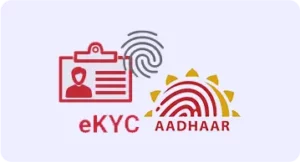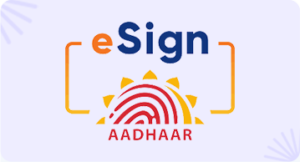Here’s How Aadhaar eSign is Changing Signing for the Better
Aadhaar e-KYC (Know Your Customer) has left a noticeable print on India. The Aadhaar eSign is a unique, electronic identifier. It is a government-prescribed method of digitally signing a document based on your Aadhaar data (a unique 16-digit ID). Aadhaar electronic signing is an encrypted signature mechanism which is used to electronically sign documents, contracts, and agreements in just a matter of minutes. The process, called e-KYC, can be done quickly using your Aadhaar number to verify your identity, address, and so on in a simple manner.
Electronic signatures are created using the authentication of the customer through Aadhaar e-KYC for signing purposes. Signing via Aadhaar adds the next level of security to ensure that the content has not been altered and verifies the authenticity of signers, maintaining the integrity of the document. The secured signing transaction takes place only with the consent of the Aadhaar owner. With Aadhaar signing in place, a company can reduce its turnaround time by replacing the “wet” ink signatures with electronic signatures which are much more secure, legal and tamper-proof.
e-KYC is an entirely paperless process. Hence, one does not need to suffer from the manual method of acquiring signatures. This is beneficial for customers as well as for the service providers as it eliminates paperwork from both ends, making the entire process digital at a massive scale.
With the rise in issuance of Aadhaar cards in the country, service providers need not worry about carrying out an inconvenient manual process which takes a lot of time, money, and effort. Instead, they are going digital; service providers can easily store and safeguard the customer database lowering the maintenance costs while making business processes quick, secure and legally compliant.
Digitizing the whole documentation process offers limited human intervention, not only making the entire process safe and less prone to fraud but also improving the overall efficiency, thus, saving time and money.
The Aadhaar e-KYC Process
Aadhaar card KYC is done using biometric information using mainly OTP/fingerprints. First, a user uploads the document to the Aadhaar API platform for signing. After the document is uploaded and the user enters the Aadhaar number, there will be a different mode of authentication which the user has to choose for verifying the signer’s identity.
OTP: There will be a one-time password act which will be sent to the signer’s Aadhaar registered mobile number.
FINGERPRINT: The fingerprints are scanned and used to access your Aadhaar. Information will be verified.
IRIS: Signer will be verified through Iris scan.
The user receives an electronic document signed copy which is also stored in the company’s database for long term archival. The process is significantly more effective than traditional signing processes. The Aadhaar eSigning process is a revolutionary methodology which is fast and cost-effective and is assumed to have tremendous importance worldwide.
Contact us today to learn more and to schedule a demo with one of our solution experts.



